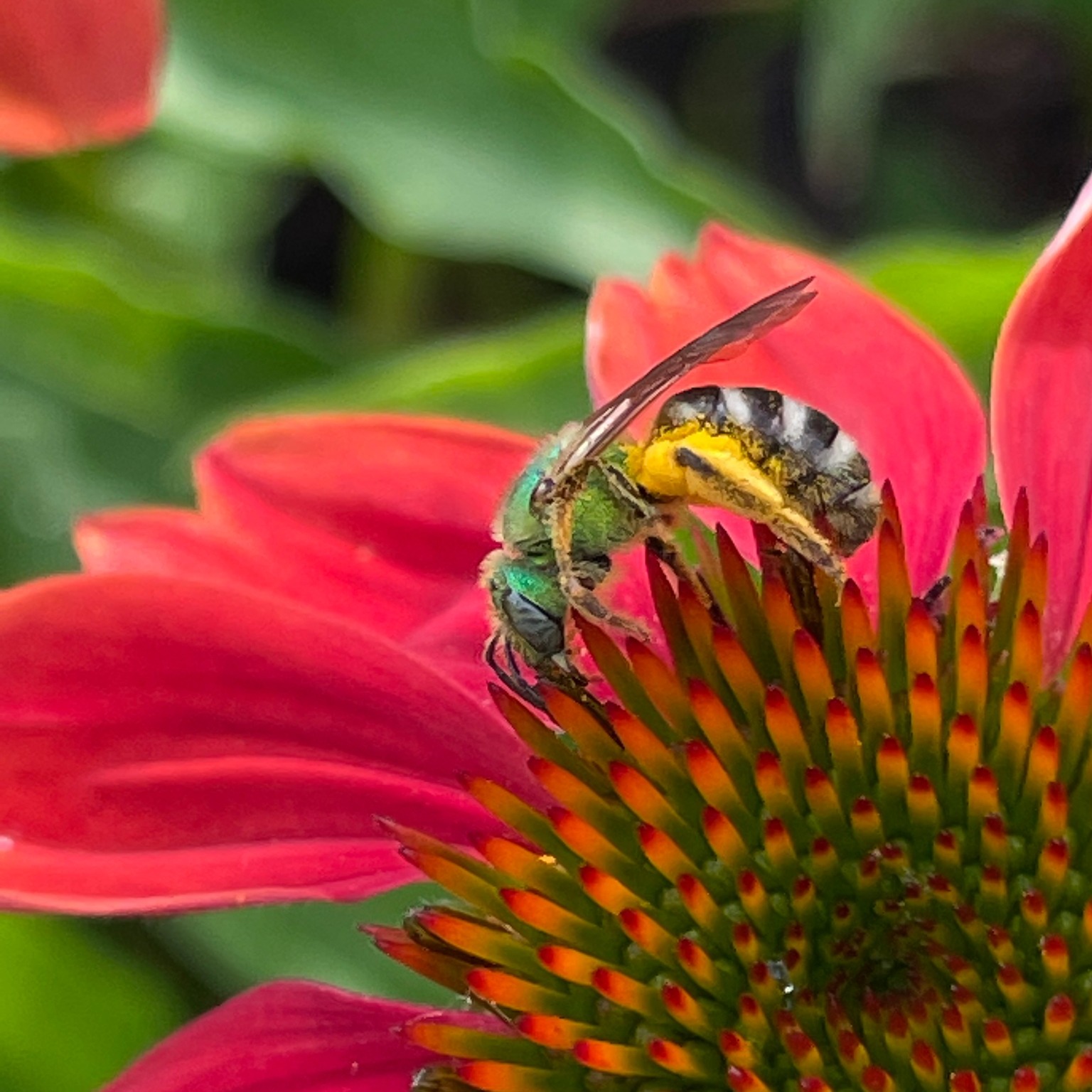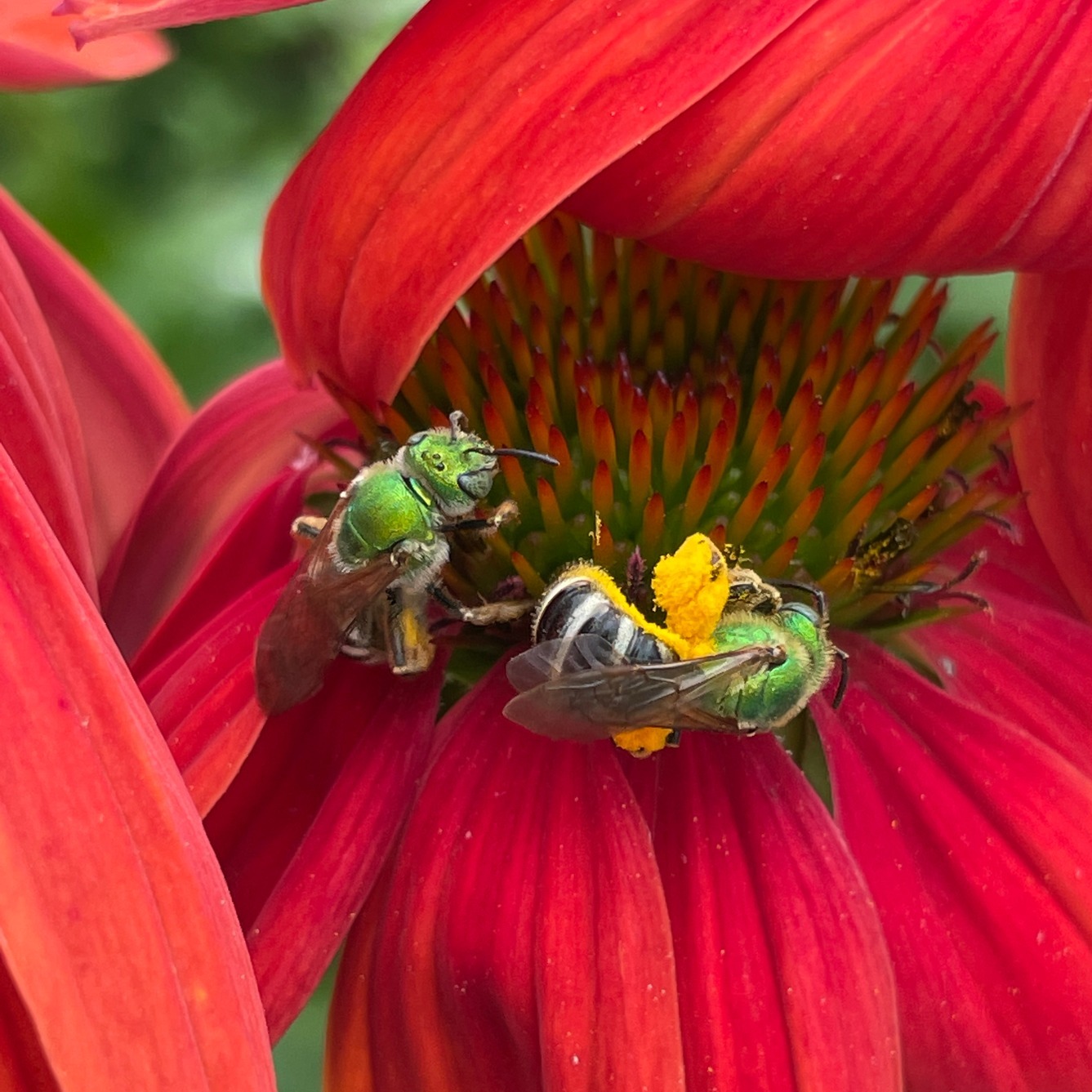Blog
The Sorta Social Bee

by Cassie Barnes, Digital Communications Specialist
Honey bees are well known as social bees, living together in hives with complex social structures and roles. And then you have the solitary bees, like mason bees, that live and nest all on their own.
Did you know, though, there's a bee whose living situation falls kind of in between those two extremes?
Meet one of the most common and most beautiful bees in our area—the bicolored striped sweat bee! These tiny bees (they're less than half an inch long) are key pollinators for our native flowers and plants.
Pictured here are female bees. Both males and females have metallic green heads and thoraxes, but females have black and white striped abdomens. Males have yellow and black stripes on their back half.

When it comes time to nest and lay eggs, female bicolored striped sweat bees dig an entrance tunnel in the ground. Off of that entrance, there will be several branching tunnels—kind of like apartment buildings have one entrance, but several individual homes inside.
Each female digs one branching tunnel off of that initial entrance hole. At the end of that tunnel, she'll begin to lay her eggs. Each egg gets its own little room off of the tunnel, sealed off from the the other eggs. Inside each egg's compartment, the female leaves a package of pollen and nectar so that when her eggs hatch, the newly emerged larvae have a meal ready to eat.
While these bees share a nesting complex, they do not interact or help each other care for their eggs or tunnels. Each bee keeps to herself and takes care of her own eggs and larvae in her own tunnel.
However, the females do work together to guard their communal nest. One or more female will stay behind to guard the nest while the others go out foraging. They take turns with guard duty, so that every bee gets a chance to go out and get food.
These communal "bee apartments" are strictly female only, too. No males are allowed.
Instead, males hang around flowers during the day looking for females to mate with. At night, they'll sleep in the flowers or, sometimes, will gather together in groups to spend the night under an overhang or in a crag. Kind of a like a boys-only bee sleepover.